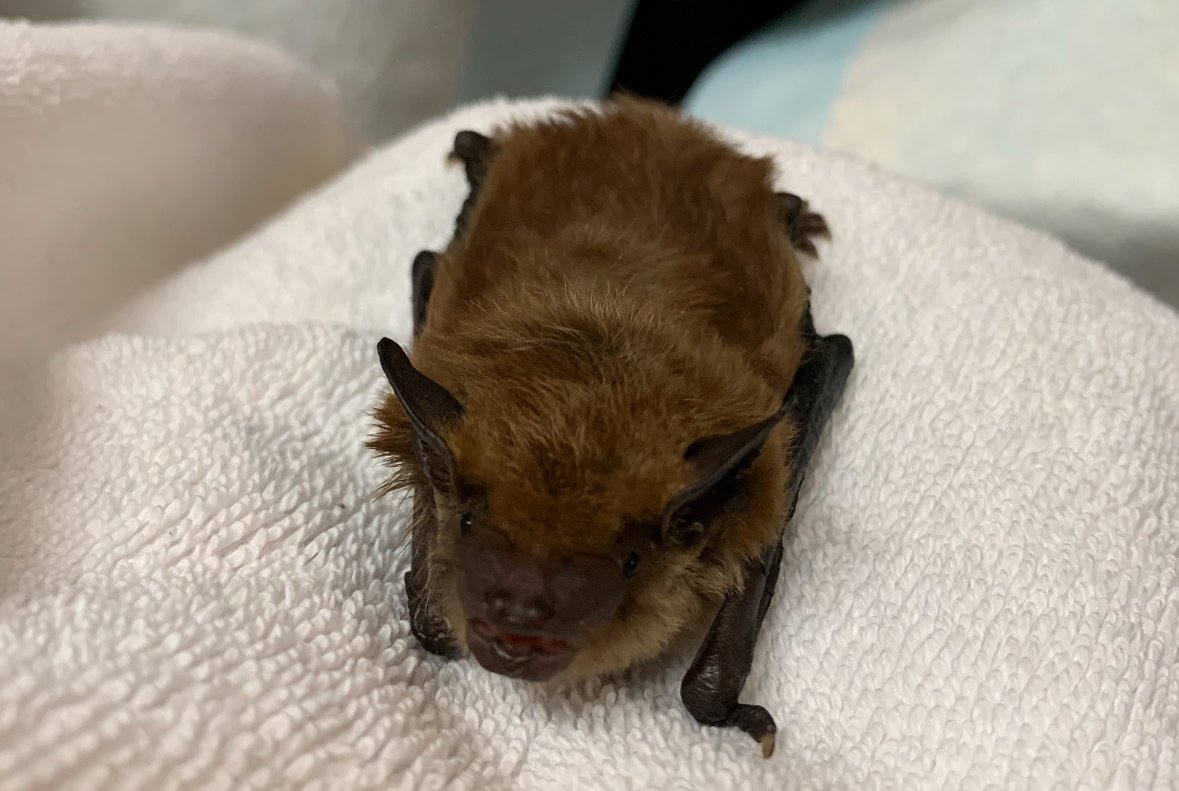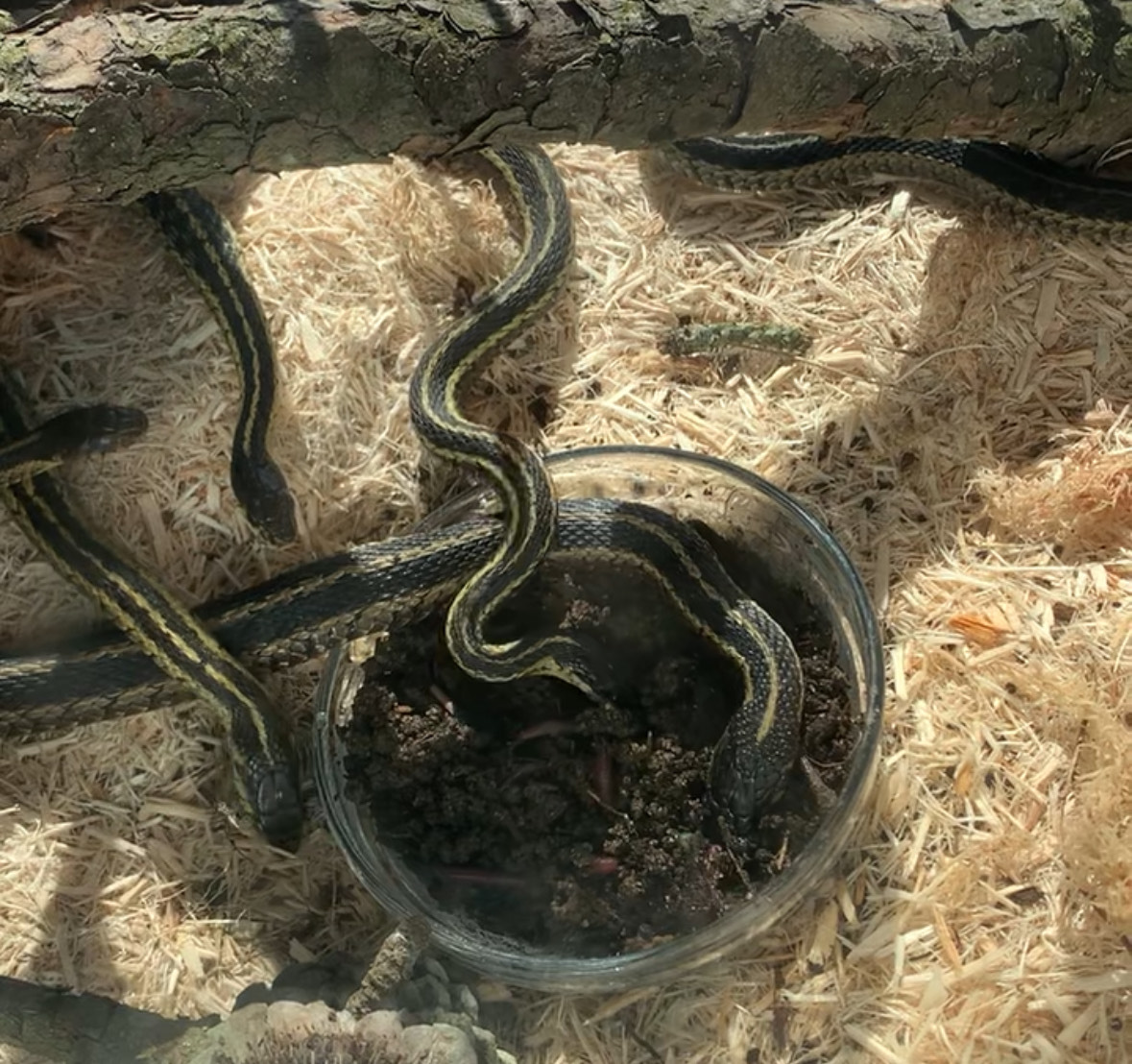Evelyn Alexander Wildlife: Understanding Hibernation Vs. Brumation & Torpor

As the winter months approach and the leaves turn into a warm array of colors, many animals begin their seasonal routine; they stock up on food and slow their metabolism to conserve energy. While it is common knowledge that this period is referred to as hibernation, in reality, few animals are “true hibernators.”
“Bears are not hibernators. They enter a period of sleep referred to as ‘torpor,’ not hibernation,” Grace DeNatale, hospital supervisor of the Evelyn Alexander Wildlife Rescue Center (EAWRC), explains.
Hibernation is defined as when animals enter a period of inactivity to reduce the amount of energy they use during cold months. DeNatale added that true hibernators, of which there are few on Long Island, are mainly groundhogs, big brown bats and wood frogs. “They go to sleep in the fall and don’t wake up until spring, unless disturbed,” she says.
Groundhog Day actually has some merit; groundhogs can sense when the ground unthaws earlier than usual, so when groundhogs pop their head out after coming out of hibernation, it signifies an early spring. Every year, groundhogs will make a new den to hibernate in, building it in the fall and abandoning it in the spring. DeNatale explains that it’s never good to relocate a groundhog in fall, since you will take him away from his work and he won’t have sufficient time to build another den. Other than the fact that it’s illegal to relocate mammals on Long Island, “people get scared because they think the groundhog will chew through their foundation, which is not true,” she adds.
Allen McButterpants, EAWRC’s groundhog ambassador, can’t build a natural den like other groundhogs in captivity, so while he won’t go into hibernation, he does slow down and get extra sleep.
The other true hibernator on Long Island is the big brown bat. Uniquely, female big brown bats can delay fertilization.
“When big brown bats mate, the female will hold onto the sperm if she is about to go into hibernation so that when she wakes up, she can have her baby,” DeNatale explains. In fact, someone once found a bat in the attic of a school, and it was during the winter, so she was delivered to the EAWRC and employees Adrian Gillespie, Jessica Chiarello, Rose Lynch and DeNatale were working to help put her back to sleep. During this time, they noticed the bat lost a lot of weight, only to discover that she had given birth to two babies in the hospital, as she delayed fertilization to after hibernation.
The last true hibernator is the wood frog. “Another unique fact,” DeNatale explains, “is that wood frogs produce an enzyme that acts as an antifreeze. They can exist in below-freezing temperatures so their blood never fully freezes while they hibernate.”
What is commonly confused with hibernation, is brumation and torpor.
“Brumation is a term used for reptiles and amphibians, and torpor is a term used for mammals, that all enter a state of reduced metabolism,” DeNatale says.
These animals will wake often when they are hungry, when the weather is warmer and if they are disturbed.

Typical brumators on Long Island include box turtles and garter snakes. DeNatale adds that, “garter snakes brumate in large groups, and one time we picked up over 20 garter snakes who were disturbed at a construction site. We kept them warm and fed, and waited until spring to release them.”
Typical torpors include bears, chipmunks and skunks. While bears are not on Long Island, they can be found across upstate New York. As stated previously, bears are not true hibernators, and will wake up if disturbed. The EAWRC urges people to never get close to a “hibernating” bear because they are not actually hibernating. DeNatale further explains that “females will wake up during the winter and have their babies. The babies will stay in the den all winter, growing larger and stronger, and the family emerges together in spring.”
Chipmunks, another torpor species, stash nuts like squirrels but will often wake up from their sleep to snack on the nuts. Skunks, similarly, will also wake up if they are hungry, or even to get some fresh sun.
Understanding the difference between hibernation and brumation and torpor is critical for understanding animal behavior during this season. Snakes, bats and other animals cannot always handle the cold temperatures if awoken or disturbed during hibernation/brumation/torpor, and should be brought to the EAWRC.
The Evelyn Alexander Wildlife Rescue Center is located at 228 West Montauk Highway, Hampton Bays. It can be reached at 631-728-4200, and animal emergencies can be reported at 631-728-WILD (9453). The center is open 9 a.m.–5 p.m. seven days weekly. Visit wildliferescuecenter.org for info.



